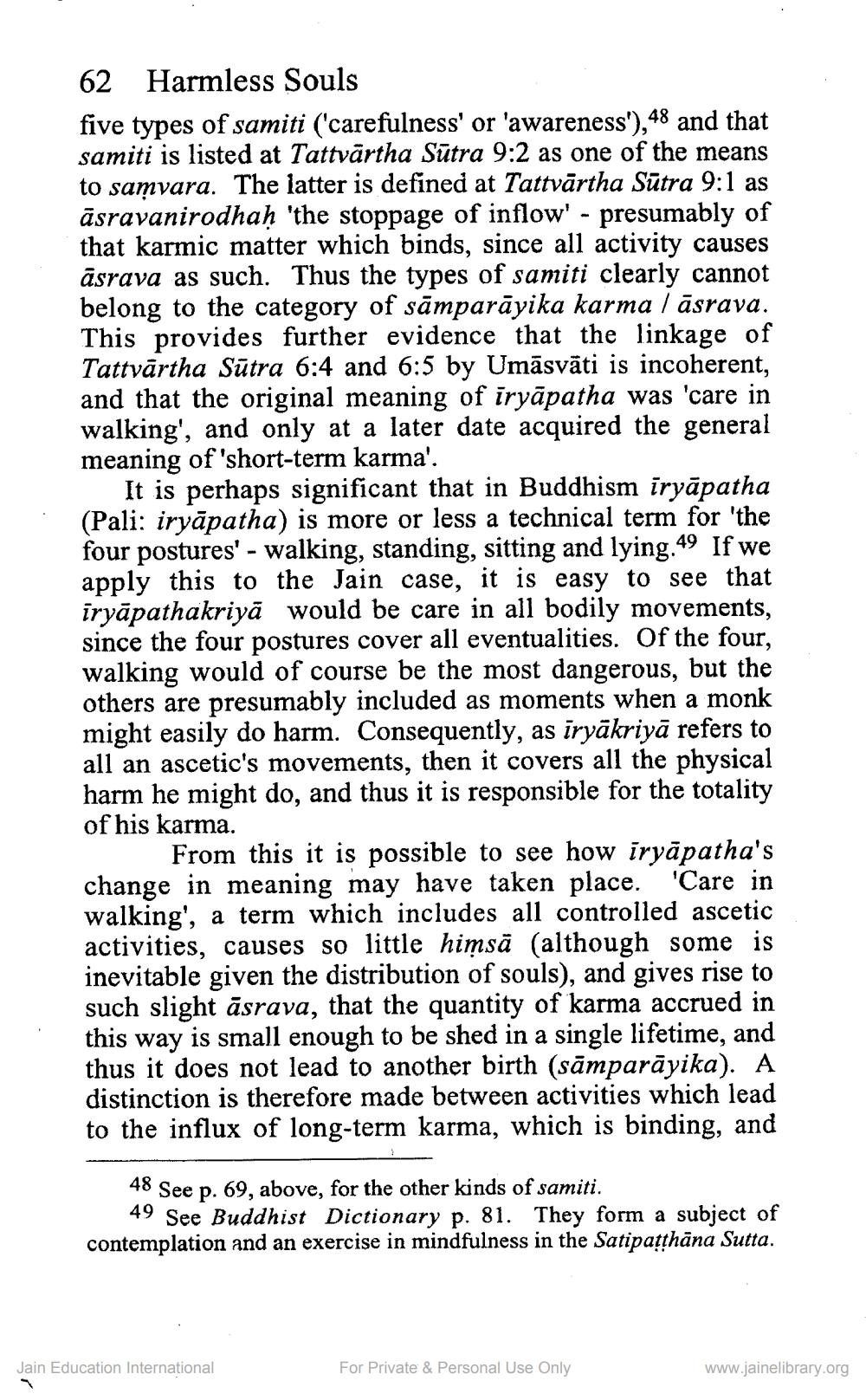________________
62 Harmless Souls five types of samiti ('carefulness' or 'awareness'),48 and that samiti is listed at Tattvārtha Sūtra 9:2 as one of the means to samvara. The latter is defined at Tattvārtha Sūtra 9:1 as āsravanirodhaḥ 'the stoppage of inflow' - presumably of that karmic matter which binds, since all activity causes āsrava as such. Thus the types of samiti clearly cannot belong to the category of sāmparāyika karma / āsrava. This provides further evidence that the linkage of Tattvārtha Sūtra 6:4 and 6:5 by Umāsvāti is incoherent, and that the original meaning of iryāpatha was 'care in walking', and only at a later date acquired the general meaning of 'short-term karma'.
It is perhaps significant that in Buddhism iryāpatha (Pali: iryāpatha) is more or less a technical term for 'the four postures' - walking, standing, sitting and lying.49 If we apply this to the Jain case, it is easy to see that iryāpathakriyā would be care in all bodily movements, since the four postures cover all eventualities. Of the four, walking would of course be the most dangerous, but the others are presumably included as moments when a monk might easily do harm. Consequently, as īryākriyā refers to all an ascetic's movements, then it covers all the physical harm he might do, and thus it is responsible for the totality of his karma.
From this it is possible to see how iryāpatha's change in meaning may have taken place. 'Care in walking', a term which includes all controlled ascetic activities, causes so little himsā (although some is inevitable given the distribution of souls), and gives rise to such slight āsrava, that the quantity of karma accrued in this way is small enough to be shed in a single lifetime, and thus it does not lead to another birth (sāmparāyika). A distinction is therefore made between activities which lead to the influx of long-term karma, which is binding, and
48 See p. 69, above, for the other kinds of samiti.
49 See Buddhist Dictionary p. 81. They form a subject of contemplation and an exercise in mindfulness in the Satipatthāna Sutta.
Jain Education International
For Private & Personal Use Only
www.jainelibrary.org




